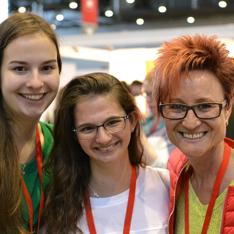D. Palaiothodorou1, E. Tsepis2, T. Antoniou3, D. Mandalidis4, G. Vagenas1
1National and Kapodistrian University of Athens, School of Physical Education and Sport Science, Department of Physical Education and Sport Science, Athens, Greece, 2School of Health Rehabilitation Sciences, Physiotherapy Department, Patra, Greece, 3Blocks Rehab Filoktitis Rehabilitation Center, Medical Imaging Department, Athens, Greece, 4National and Kapodistrian University of Athens, School of Physical Education and Sport Science, Department of Physical Education and Sport Science, Sports Physical Therapy Laboratory, Athens, Greece
Background: The effects of exercise on bones and muscles in children are growth- and health-relevant. These effects are typically explored via Tennis in accordance with the age-progressing training volume and the pubertal status. The highly asymmetric patterns of Tennis create osseous and muscular asymmetries between the dominant (D) and non-dominant (ND) arm. The shape of dependency of these asymmetries on age and pubertal status required further clarification.
Purpose: The study aimed to determine how asymmetries in bone and muscle growth in the upper arms of children and adolescent tennis players progress over a period of 9 months of systematic participation across the developmental age-span of 7-13 years in relation to pubertal status.
Methods: A sample of 46 children (25 boys and 21 girls) was split into four groups: A: pre-puberty1 [PrP1] (8.18 ± 0.48 yrs), B: pre-puberty2 [PrP2] (9.47 ± 0.14 yrs), C: pre/peri-puberty [PrPerP] (10.53 ± 0.32 yrs), D: peri/post-puberty [PerPostP] (12.28 ± 0.60 yrs). Bone mineral content (BMC), bone area (ΒΑ), and lean body mass (LBM) of the upper arms were measured using DXA, while hand-grip strength (HGS) was measured with an analog hand dynamometer. Sexual maturity was assessed by the Tanner method. Statistical analysis included ANOVAs, Bonferroni-adjusted paired t-tests, and effect sizes (Hedges' g and η²).
Results: Overall, BMC, BA, LBM, and HGS were 8% to 20% greater in the D compared to the ND arm. There were significant differences among the four groups in BMC, BA, and LBM asymmetry pre- and post-test (p < 0.01, η² = 0.19 – 0.61), but not in HGS asymmetry (p > 0.05, η² = 0.8 – 0.16). During the 9-month period BMC asymmetry changed less for groups PrP1 (10.9% to 9.6%, p = 0.88, g = 0.03), PrP2 (20.2% to 21.0%, p = 0.15, g = 0.30), and PerPostP (20.8% to 22.1%, p > 0.01, g = 0.56), and more for group PrPerP (17.3% to 24.5%, p < 0.001, g = 1.4). The respective changes in BA, LBM, and HGS asymmetry were generally small except for group PrPerP (BA: 11.6% to 16.7%, p > 0.01, g = 0.88; LBM: 6.9% to 8.7%, p > 0.01, g = 0.58), and for group PrP2 (HGS: 12.3% to 15.4%, p > 0.01, g = 0.50).
Conclusions: The systematic participation in tennis from early childhood to post-puberty elicits substantial hypertrophy of the D arm in bone mass and thickness, and in muscle mass and strength. The rate of this hypertrophy is sharper during pre- to peri-puberty and slower during peri- to post-puberty. This data improves our understanding of the pattern of structural and functional adaptations of the upper limbs in youth tennis during growth.
Implications: The results could guide training decisions and the implementation of targeted interventions (i.e., more symmetric training of the arms) to limit excessive bone and muscle imbalances especially during pre- to peri-puberty. Implications are thus relevant not only to performance but also to the conditions that predispose to injury and osteoporosis in later life.
Funding acknowledgements: This scientific paper was supported by the Onassis Foundation - Scholarship ID: GZJ039-1/2013-14.
Keywords:
Tennis asymmetries
Bone-muscle growth
Children
Tennis asymmetries
Bone-muscle growth
Children
Topics:
Musculoskeletal: upper limb
Paediatrics
Sport & sports injuries
Musculoskeletal: upper limb
Paediatrics
Sport & sports injuries
Did this work require ethics approval? Yes
Institution: National and Kapodistrian University of Athens
Committee: School of Physical Education and Sports Science
Ethics number: (1019/6/9/2017)
All authors, affiliations and abstracts have been published as submitted.

